Memorial Day is a day that we have set aside to honor our members of the armed services who have been killed in action or have once served and have now passed away. It is a day when Americans are supposed to honor our fallen warriors. It is a day to do our duties and honor those who have fallen, console the bereaved families, as well as be there for those orphaned and widowed.
We should show our gratitude towards those who have fallen and their families in the following ways:
· By adorning their graves with flowers and flags.
· By visiting military cemeteries, or the veteran's section in cemeteries.
· By attending observances, services, and memorials.
· By furling the American Flag at half-mast until noon.
· By observing a moment of silence at 3 p.m. which is the "National Moment of Remembrance"
· By listening to Taps being played for those not here.
· By taking a pledge to aid disabled veterans, widows, widowers, and orphans of the fallen. And yes, we must keep that pledge.
Memorial Day is a day for us to show our gratitude by never forgetting those who have fallen.
From the battles of the American Revolution, the War of 1812, the Civil War, the Spanish-American War, World War I, World War II, Korea, Vietnam, the Persian Gulf, Iraq, Afghanistan, and in the many operations around the world, members of our military have given us their honorable service and died for us.
Time after time over more than two centuries, Americans have been called to defend the founding ideals of our Republic. During these centuries, American troops have liberated cities, vanquished evil, destroyed tyranny, and lifted the oppressed out of bondage. Yes. More so than any other nation in the history of the world.
We have forced dictators and despots to flee and, in some cases, commit suicide. We have given freedom to more than can be counted. And in contrast to every other such powerful nation in the history of mankind, Americans have not planted our flag and declared ourselves conquerors. Instead, we have only sought friendship and peace in return. In every case where diplomacy has failed, the American Soldier, Sailor, Airman, and Marine have been there to right wrongs and bring about victory.
On Memorial Day, all of us demonstrate our love and gratitude by together as a grateful nation remembering the proud patriots who made the ultimate sacrifice in defense of liberty's blessings. We do so because it is right. We do so because we understand the cost of freedom. We do so because we are a good people.
As we observe Memorial Day, we remember the more than one million Americans killed in action preserving our freedoms, the more than 140,000 who were prisoners of war, all those who have been declared missing in action, those Veterans who have passed on, and their loved ones.
We must all understand that all our troops, everyone who ever died in uniform, have died attempting to do great and noble deeds. In the big picture, our men and women in uniform have died attempting to set nations free, to save lives, to feed the world, to free enslaved people, stop conquest, to protect our way of life, and much more. They have stepped forward to preserve our uniquely American society based on the principles of freedom and liberty that make America the hope of the world.
Yes, freedom is something that is fought for and fought for and fought for, generation after generation after generation.
While that is the big picture, the small picture, the more personal picture, is even more impressive because our troops died in battle for each other. It's true. While they died for the freedoms we enjoy every day, in more cases than can possibly be imagined, they died so a buddy, a comrade, a fellow member of his or her unit, could make it home in their place.
Today, Americans remember those killed in action and those veterans who have passed. And while doing so, it is only right that we say, “We have not forgotten you. Thank you. God Bless you.”
Tom Correa
Sunday, May 29, 2022
The Wreck of the Sir John Franklin

On December 10, 1864, Sherman's Army of Georgia arrived at Savannah, Georgia, completing the famous "March to the Sea". At Savannah, his troops take Fort McAllister and force Confederate defenders to evacuate the city. By December 16, 1864, the Battle of Nashville, Tennessee ends when the Confederate Army under the command of Gen. John Bell Hood is thoroughly defeated.
On January 15, 1865, Union forces assault and capture Fort Fisher, North Carolina. Union occupation of this fort at the mouth of the Cape Fear River closes access to Wilmington. It is the last Southern seaport on the East Coast that was open to blockade runners and commercial shipping.
On January 17, 1865, a geographic name change takes place on a cape between Pigeon Point and Point Año Nuevo on the California coast. Early charts labeled the cape as "Middle Point." After January 17, 1865, it will be known as "Franklin Point" because the American clipper ship Sir John Franklin wrecked there. Today, Franklin Point is part of the Año Nuevo State Reserve in San Mateo County, California. The point is named after the clipper ship Sir John Franklin.
The Daily Alta California (San Francisco, CA), January 19, 1865, p.1, col.2. reported:
DISASTROUS SHIPWRECK AND LOSS OF LIFE—THE SHIP "SIR JOHN FRANKLIN" LOST—THE CAPTAIN AND ELEVEN MEN DROWNED.
The Daily Alta California (San Francisco, CA), 23 January 1865, p 1, col 2., reported:
FROM THE WRECK
Captain J. W. Sayward, who left the wreck of the Sir John Franklin on Saturday evening, informs us that up to that time six bodies had been recovered, and an inquest had been held by the Coroner of Santa Cruz county.
The American clipper ship Sir John Franklin was known to make a regular run along the West Coast. es, even during the days of the Civil War, it routinely ran cargo between South American ports and San Francisco, California. In January of 1865, the ship was bound for San Francisco after taking on cargo in Rio de Janeiro, Brazil. By the time it reached the California coast, it found itself in mercilessly dense fog and fighting heavy seas with a full cargo of lumber, pianos, coal oil, candles, other dry goods, and 300 barrels of "spirits." Its Captain, John J. Despeaux, believed his ship was further out to sea and away from the coast. Then almost instantly, it violently ran aground on the rocks on the point which would forever after bear its name.
DISASTROUS SHIPWRECK AND LOSS OF LIFE—THE SHIP "SIR JOHN FRANKLIN" LOST—THE CAPTAIN AND ELEVEN MEN DROWNED.
First Officer Boyd, of the American ship Sir John Franklin, arrived in this city last evening from Pigeon Point, between thirty and forty miles south of Point Lobos, where the ship went on shore in the fog on Tuesday night. He reports the vessel and cargo a total loss. His statement is that owing to the prevailing fog no observation had been taken for twenty-four hours, and it was supposed that the vessel was about seventy miles off land.
She was standing in shore, and about nine o'clock, when the fog lifted, it was discovered that she was close in on the breakers. Orders were given at once to wear ship, but before they could be carried out, she struck with great violence on the rocks, outside the bar, staving her bottom and carrying her masts overboard. In a few minutes after striking, the vessel parted amid-ships and the cargo went out of her. The wreck floated over the rocks and went ashore on the beach, the sea making clean breaks over her.
When she broke in two, Captain Despeaux and the crew, twenty in all, were standing near together, amidships, with the exception of two men on the forecastle, and all clung to the vessel until it struck the beach. Then they commenced washing overboard, the undertow carrying them out from the land repeatedly, and after being nearly two hours in the water, struggling among the drift and pieces of the wreck and cargo. First Officer Boyd, Second Officer Ball, Third Officer Jefferson Welch and five seamen, gained the shore alone, all the rest having perished.
The survivors wandered on the shore for some hours, wet, and nearly perishing with cold and exhaustion, before reaching a farm-house, where they were cared for as well as circumstances would permit. The survivors, with the exception of Mr. Boyd, remained at the farm house last evening, having no means of coming up to the city save by footing it.
The Sir John Franklin was owned by Lambert Gidden of Baltimore, and was rated as a first-class ship. She was loaded, in part, with the cargo of the ship Charles Pennell, which put into Rio in distress and was condemned, and in part with general merchandise, consigned to Brooks & Co.
Captain Despeaux was a native of Baltimore, and leaves no family. Mr. Boyd believes that the ship and cargo were insured, but it is not positive of the fact. This in the second disastrous shipwreck in that locality, the Carrier Pigeon having left her frame and name there some year since.
Records report that the Pacific Ocean ruthlessly beat the ship to death. Its cargo gone, it destroyed, and with its Captain and eleven men killed, it sat at the mercy of the Pacific. When help arrived to assist, only 8 of the ship's crew were found alive. Of the rest of the crew, only six of the bodies of the victims were recovered. Of the original 20-man crew, 8 survived and 12 drowned. And think about this, only four seamen, the Captain, and another officer were found.
FROM THE WRECK
Captain J. W. Sayward, who left the wreck of the Sir John Franklin on Saturday evening, informs us that up to that time six bodies had been recovered, and an inquest had been held by the Coroner of Santa Cruz county.
Imagine for a moment, that of the 12 that drowned, that includes the ship's Captain. Only six of the victims were recovered for burial. And here's more, when their bodies came ashore, it was local Portuguese whalers who buried the four seamen on that point. And while the four crewmen were buried right there on the point, the bodies of Capt. Despeaux and another officer were not -- and instead were taken to San Francisco.
So now you're wondering why the Captain and the other officer were taken to San Francisco instead of being buried with the others? Well, believe it or not, that has to do with the 300 barrels of booze. Hours after the Sir John Franklin struck the rocks, word of her being battered and beaten by the waves was telegraphed to San Francisco newspapers and the Merchants' Exchange in that city.
Merchants and saloon owners immediately realized that its cargo of 300 barrels of "spirits" may still be salvaged. So they assembled several local militia groups. They armed themselves and made the march to where the Sir John Franklin lay stranded and being broken. To their disappointment, the precious cargo of booze mysteriously disappeared by the time the San Francisco militias arrived.
On their return, the San Francisco militias transported the bodies of 47-year-old Captain John J. Despeaux and the other ship's officer with them. As for Captain Despeaux, by late October, he was transported by rail to Baltimore, Maryland where he was buried near his home in Green Mount Cemetery. The ad-hoc cemetery where those Portuguese whalers buried the four crewmen in the sand dunes became what is known today as the Franklin Point Cemetery. And yes, the story of that cemetery in the sand is coming up next.
Tom Correa
Saturday, May 21, 2022
On Yellowstone's 150th anniversary, 150 fascinating facts about America's first national park
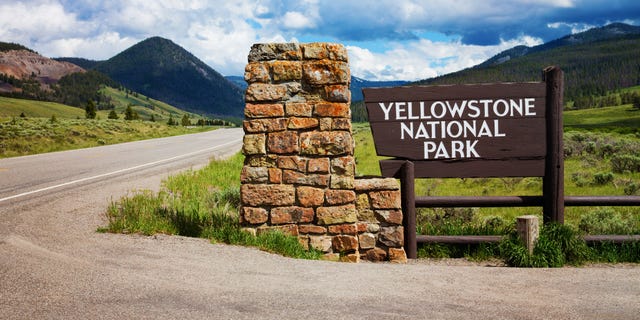
One of the entrances to Yellowstone National Park is shown here.
Fox News
As the U.S. celebrates — all year long — a milestone anniversary of this treasured American national park, here's a collection of fascinating facts, featured players, and sometimes-forgotten but always interesting details, numbers, quotes, and more connected to our remarkable national preserve.
Yellowstone's beginnings
1. Established on March 1, 1872, Yellowstone National Park became the first national park in the U.S.
2. President Ulysses S. Grant signed the Yellowstone Protection Act into law for "the benefit and enjoyment of the people."
3. President Grant never visited Yellowstone; but he explored areas of the American West such as Washington state, Nebraska, the Dakotas, and Colorado, all of which piqued his interest in wildlife preservation.
4. Archeological sites, trails, and oral histories prove that humans have inhabited Yellowstone for the last 11,000 years.
5. Yellowstone National Park was the site of 27 Native American tribes for more than 10,000 years before the park was founded.
6. The first organized European American expedition explored Yellowstone in 1870.
7. The railroad arrived at Yellowstone in 1883 — expanding accessibility to the park.
8. The U.S. Army was put in charge of watching over the park in 1886.
Yellowstone National Park stretches for 3,472 square miles and across more than 2.2 million acres — making it larger than Rhode Island and Delaware combined.
9. In the early 1900s, the federal government launched a campaign that killed off nearly all predatory species and bison.
10. The National Park Service was founded in 1916.
Yellowstone's geography
11. Yellowstone exists across 3 states — mostly in Wyoming (96%) and in Montana (3%) and Idaho (1%) as well.
12. The highest point of Yellowstone National Park is 11,358 feet, at Eagle Peak.
13. The lowest point of Yellowstone National Park is 5,282 feet at Reese Creek.
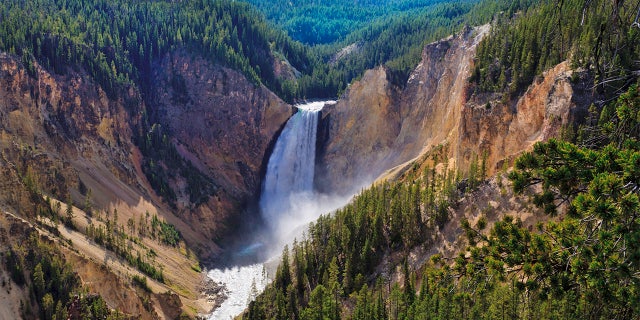
15. The park is located at the convergence of the Great Plains, Great Basin and Columbia Plateau.
16. Yellowstone National Park is bigger than 2 U.S. states. It stretches for 3,472 square miles and across more than 2.2 million acres — making it larger than Rhode Island and Delaware combined, according to Yellowstone.org.
Yellowstone's landscape
17. Yellowstone Lake is the largest high-elevation lake in North America, at 7,733 feet above sea level.
18. Yellowstone Lake measures 131.7 square miles of surface area and 141 miles of shoreline.
19. Yellowstone Lake reaches a maximum depth of 430 feet.
20. Yellowstone has over 1,000 native flowering species and 225 species of invasive plants.
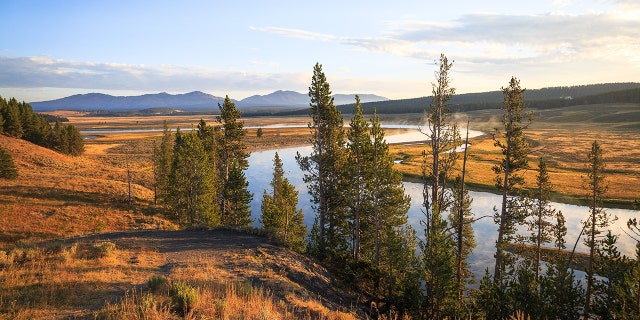
21. More than 80% of Yellowstone’s forests are made up of lodgepole pine.
22. Yellowstone is classified under the highest category (Class 1) of clean air protection under the Clean Air Act (1970).
23. Across Yellowstone’s more than 2.2 million acres, about 290 waterfalls can be found.
24. The Grand Canyon of the Yellowstone River in Hayden Valley is roughly 20 miles long, flowing from the 109-foot Upper Falls.
25. Lower Falls of the Yellowstone River is the tallest waterfall near a road, measuring 308 feet.
26. The canyon’s Lower Falls flows about 63,500 gallons of water per second over the falls at peak runoff.
27. The Yellowstone Volcano Observatory (YVO) was established in 2001 to monitor volcanic activity.
28. Yellowstone sits atop an active volcano, yet an eruption in the next few hundred years is unlikely, according to YVO research.
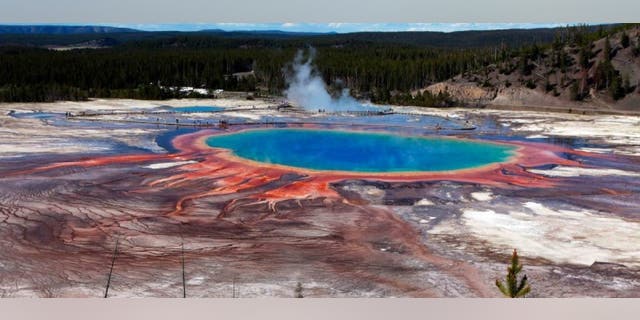
29. The Yellowstone Super Volcano is one of the largest calderas in the world, measuring 45 x 30 miles.
30. Yellowstone has more than 10,000 hydrothermal features, including geysers, hot springs, mud pots and fumaroles.
There are more than 500 active geysers in Yellowstone.
31. Grand Prismatic Spring is Yellowstone's largest hot spring, measuring 200-330 feet in diameter and more than 121 feet deep.
32. Hot springs have killed or injured more people in Yellowstone than any other natural features.
33. Boardwalks and trails have been laid down for visitor safety in thermal areas, since more than 20 people have died from severe burns.
Yellowstone's wildlife and ecosystem
42. The park is home to the largest population of mammals in the lower 48 states.
43. There are 67 different species of mammals in the Yellowstone area.
44. Yellowstone requires wildlife watchers to stay 100 yards away from predatory species and 25 yards from all other animals.
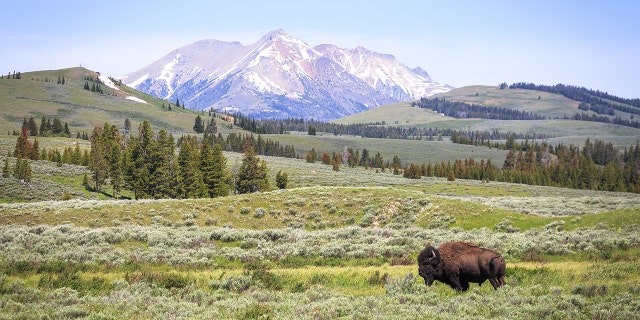
45. Yellowstone has been nicknamed the "American Serengeti" for its unpredictable wildlife patterns and vast ecosystem, according to Natural Habitat Adventures.
46. The last known Yellowstone wolf pack was exterminated in 1926, according to National Geographic.
47. Forty-one wolves were reintroduced to Yellowstone in the mid-'90s to reestablish ecosystem balance.
48. Grizzly bear and mountain lion populations grew due to increased protection in the 90s, as well.
Yellowstone is home to the largest free-ranging herd of bison in North America.
49. Grizzly bears in the state of Wyoming are federally managed and endangered, with only an estimated 600 to 800 bears left. Canada lynx and grizzly bears are both threatened species.
50. Moose, the largest member of the deer family, can stand over six feet tall.

51. Moose antlers can weigh up to 25 pounds each and span up to six feet wide.
52. Moose can run 30 to 35 miles an hour — a lot faster than humans, according to Jackson Hole EcoTour Adventures founder Taylor Phillips.
53. Breeding season for Yellowstone elk takes place in late September, early October when lots of bugling can be heard.
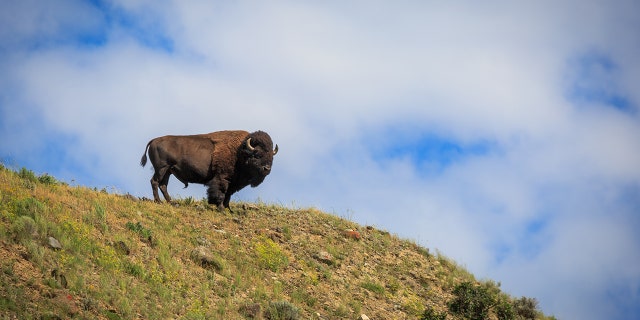
56. Yellowstone is home to the largest free-ranging herd of bison in North America.
57. Yellowstone has recovered a population of about 3,000 to 4,000 bison per year since the extermination of an estimated 60 million in the 1800s.
58. Bison are the largest land mammal in North America, with the biggest male bison weighing up to 2,000 pounds.
59. A bison attack occurs every year at Yellowstone — patrons are tossed by a bison’s horns, according to Phillips.
61. An estimated 100 colonies of beavers are native to Yellowstone as of 2015.
62. Beavers, the largest rodent in North America, can measure up to 40 inches long and weigh up to 60 pounds.
63. As of 2019, 285 bird species — 150 of them nesting — could be spotted in Yellowstone.
64. Yellowstone is home to 16 fish species, 6 reptile species and 5 amphibian species.
65. Cutthroat trout were the dominant Yellowstone fish species even prior to Euroamerican settlement.

66. Some 50,000 visitors out of 4 million visit Yellowstone annually to fish.
Yellowstone's explorations
71. Lamar Valley is considered the best site to view wildlife in Yellowstone by Outdoor Project.
72. Rocky terrain species like bighorn sheep, bison, antelope and deer can be best spotted in the Tower-Roosevelt area aloft Yellowstone’s cliffs.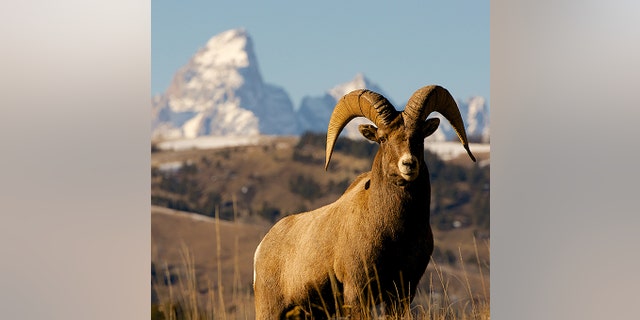
73. Grizzly bears can be spotted in Hayden Valley in the spring and early summer months — along with bison, coyotes, and various birds.
74. Canyon Village’s Mount Washburn, a popular place for a day hike, has a peak elevation of 10,219 feet.
75. Mount Washburn has panoramic views for 20 to 50 miles.

76. Mount Washburn, the remnant of volcanic activity, was named after the 1870s Washburn-Langford-Doane expedition leader General Henry Washburn.
77. Wildflower season begins at lower elevations in April and continues upward through July.
78. Dunraven Pass is a popular destination for visitors to view carpets of wildflowers.
Yellowstone's recreation and visitation
79. There are about 3,200 employees working for concessioners during the summer peak at Yellowstone.
80. Yellowstone National Park has 11 visitor centers, museums, and contact stations.
81. The park has 9 hotels and lodges, with more than 2,000 rooms.
82. Yellowstone has 7 campgrounds managed by the National Park Service (NPS) and 5 concession-operated campgrounds.
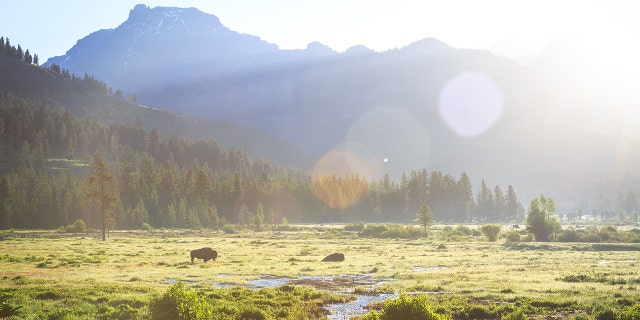
83. Yellowstone has 52 picnic areas and one marina.
84. The park has a total of 466 miles of paved roads and more than 15 miles of boardwalk.
85. There are approximately 1,000 miles of hiking trails throughout the park.
86. Yellowstone has 35 ski and snowshoe trails.
87. Yellowstone's Grand Loop is 142 miles of road; it curves in a figure-8 throughout the park, according to Planet Ware.
88. Driving the entire loop can take 4 to 7 hours, depending on traffic.
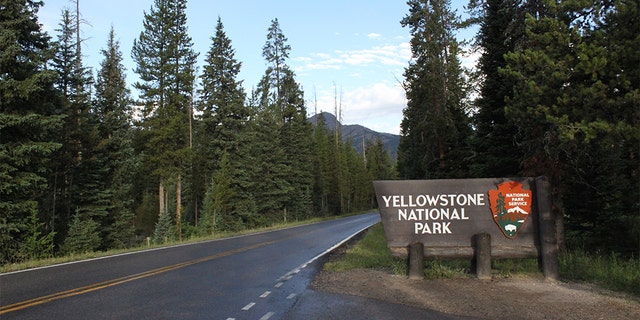
89. Scattered throughout Yellowstone’s back country are 301 campsites and 92 trailheads.
90. The year 2021 marked Yellowstone’s busiest year on record, at 4,860,537 visitors — up 28% from 2020 (the year the coronavirus pandemic hit the U.S.).
91. July 2021 was the most visited month that year — and the month of July continues to be the most popular month for visitors every year.
92. In July 2021, the park exceeded 1 million visitors in that month alone, which marked the first time it had done so in recorded history.
Yellowstone's weather
93. Yellowstone receives about 10 inches of precipitation annually at the north boundary and about 80 inches in the southwest corner.
94. Yellowstone hit a record-high temperature of 99 degrees Fahrenheit in Mammoth Hot Springs in 2002.
95. The park hit a record-low temperature of -66 degrees Fahrenheit in 1933 at West Entrance, Riverside Station.

96. The average daily temperature in Yellowstone is a high of 80 degrees and a low of 9 degrees.
97. From April to October, the Milky Way is visible over Yellowstone.
98. The Northern Lights (aurora borealis) appear once or twice a year.
99. Average annual park-wide snowfall is 150 inches, but the snow can reach 200-400 inches at higher elevations, according to Yellowstone National Park Lodges.

103. More than $120 million was spent fighting the total of 51 wildfires in 1988.
104. All new natural fires after July 15, 1988, were ordered to be suppressed manually.
105. A quarter-inch of snow on Sept. 11, 1988, put a final stop to the fires that year.
Yellowstone's landscape has been naturally shaped by 14,000 years of wildfires.
106. Wildfires in 2016 at Yellowstone burned 70,285 acres of land.
Yellowstone's research and history
109. More than 1,800 archeological sites are known to be located within the park.
110. Over 20,000 museum items, 30 historic vehicles — plus 20,000 rare books, manuscripts and periodicals — and millions of archived documents are housed at Yellowstone’s research centers.
111. The Yellowstone Research Library collects published and unpublished materials related to the national park for public enjoyment.
112. The library is hosting a Sesquicentennial Summer Reading Challenge for the 150th anniversary — challenging participants to read 1,872 minutes between April and August.
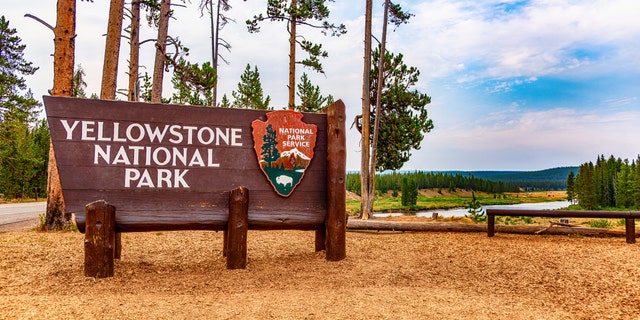
116. The Old Faithful Inn has been considered the world's largest log cabin open to lodging guests and a dining room that feeds the public.
117. The 1,170-mile Nez Perce National Historic Trail — stretching from Wallowa Lake, Oregon, to the Bear’s Paw Mountains in Montana — cuts through Yellowstone Park.
118. The trail founded in 1986 and managed by the U.S. Forest Service pays tribute to the Nez Perce tribe that was uprooted and killed by settlers in 1877.
There are more than 900 historic buildings in Yellowstone.
119. Mission 66 revitalization efforts began in 1955 to mend deterioration that occurred during WWII.
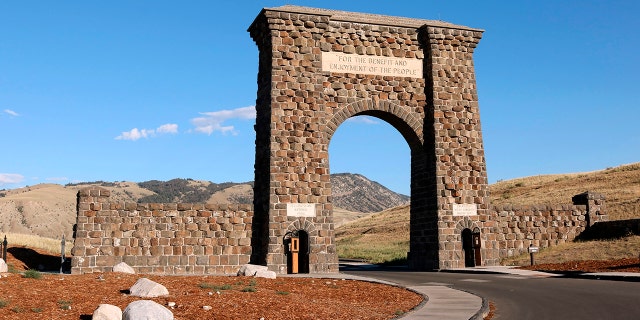
126. Arch construction took about 6 months and cost about $10,000.

129. A time capsule put together by local Masons was placed inside the arch; it reportedly contains a Bible, a picture of Roosevelt, Masonic documents, newspapers, coins and other belongings.
130. Roosevelt never returned to Yellowstone after the dedication and never witnessed the completed arch.
Harding snapped a photo with Yellowstone’s famous black bear Jesse James.
131. President Woodrow Wilson approved the National Park Service Organic Act put forward by Congress on Aug. 25, 1916, which marked the beginning of the National Park Service.
132. President Warren Harding visited Yellowstone National Park in 1923 as the first stop on his national parks’ tour, according to the White House Historical Association. (He died on Aug. 2, 1923.)
133. Harding snapped a photo with Yellowstone’s famous black bear Jesse James.
134. Alongside reporters and a camera crew, Harding told the public, "Commercialism will never be tolerated here as long as I have the power to prevent it."
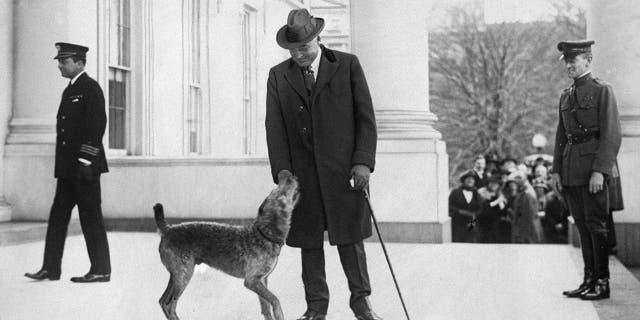
135. President Calvin Coolidge and his first lady, Grace Coolidge, visited Yellowstone on Aug. 22, 1927.
136. Coolidge caught 15 fish — when instructed in fishing with spinners by a park ranger — in the Firehole River near Old Faithful.
137. President Gerald R. Ford worked as a park ranger at Yellowstone National Park as a youth during the summer of 1936.
138. Ford returned to Yellowstone as president on Aug. 29, 1976, to renew national interest in America’s parks.
Yellowstone's celebrity status
139. Yellowstone Club is the world’s only private ski, golf and adventure community.
140. The club situated in the Rocky Mountains, located north of the park, spans 15,200 acres in Big Sky, Montana.
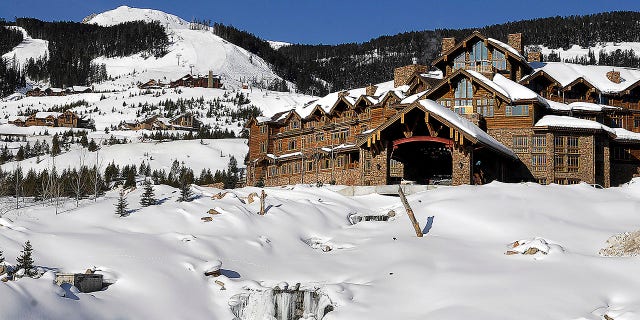
141. Luxury Yellowstone Club real estate and custom residencies are available for purchase.
142. Celebrity Yellowstone Club members include Bill and Melinda Gates, Tom Brady and Gisele Bundchen, and Justin Timberlake and Jessica Biel, according to Celebrity Net Worth.
The Season 4 finale of "Yellowstone" broke major records, with more than 11 million total viewers.
143. Paramount Network's popular drama "Yellowstone" launched in 2018. It highlights the modern-day struggle of ranchers who have owned land for centuries.
144. The Season 4 finale of "Yellowstone" broke major records, with more than 11 million total viewers, according to Deadline.
145. "Yellowstone" star Kevin Costner is set to launch the "Yellowstone: One-Fifty" series on Fox Nation later this year.
Yellowstone's noted quotes
146. Theodore Roosevelt said, "There can be nothing in the world more beautiful than the Yosemite, the groves of the giant sequoias and redwoods, the Canyon of the Colorado, the Canyon of the Yellowstone, the Three Tetons; and our people should see to it that they are preserved for their children and their children’s children forever, with their majestic beauty all unmarred."
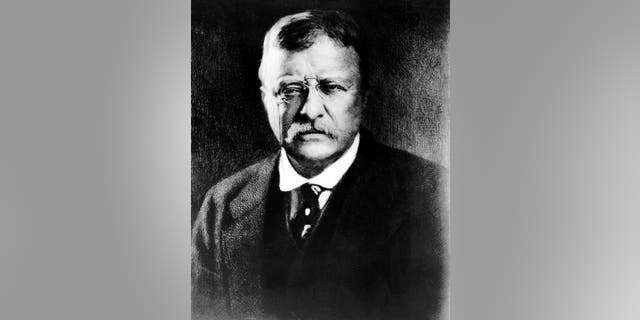
147. "Maybe you weren’t born with a silver spoon in your mouth, but like every American, you carry a deed to 635 million acres of public lands," said Rep. John Garamendi, D-Calif. "That’s right. Even if you don’t own a house or the latest computer on the market, you own Yosemite, Yellowstone, the Grand Canyon, Golden Gate National Recreation Area, and many other natural treasures."
148. "Yellowstone, of all the national parks, is the wildest and most universal in its appeal," said Brigham Young University associate professor of history Susan Rugh. "Daily new, always strange, ever full of change, it is nature’s wonder park. It is the most human and the most popular of all parks."
149. Naturalist John Muir wrote, "To everybody over all the world, water is beautiful forever, whether falling upward into the sky in snowy geysers, or downward into deep resounding canyons, or gliding and resting in calm rivers and lakes."
150. "The Yosemite, the Yellowstone, the Grand Canyon are national properties in which every citizen has a vested interest; they belong as much to the man of Massachusetts, of Michigan, of Florida, as they do to the people of California, of Wyoming, and of Arizona," said Stephen Mather, first director of the national parks.
Sources for the material in this article include the National Park Service, Yellowstone National Park, Yellowstone National Park Lodges, Jackson Hole EcoTour Adventures, Outdoor Project, National Geographic, Natural Habitat Adventures, White House Historical Association, Yellowstone Club, Planet Ware, and Celebrity Net Worth.
Fox News Writer Angelica Stabile is a lifestyle writer for Fox News Digital. Follow her on Twitter at @atstabile.
American history, science, nature, and more are celebrated within this stunning national treasure
Happy 150th birthday,
Yellowstone National Park!
As the U.S. celebrates — all year long — a milestone anniversary of this treasured American national park, here's a collection of fascinating facts, featured players, and sometimes-forgotten but always interesting details, numbers, quotes, and more connected to our remarkable national preserve.
As Yellowstone turns 150 this year,
check out these 150 facts — and share them!
Yellowstone's beginnings
1. Established on March 1, 1872, Yellowstone National Park became the first national park in the U.S.
2. President Ulysses S. Grant signed the Yellowstone Protection Act into law for "the benefit and enjoyment of the people."
3. President Grant never visited Yellowstone; but he explored areas of the American West such as Washington state, Nebraska, the Dakotas, and Colorado, all of which piqued his interest in wildlife preservation.
4. Archeological sites, trails, and oral histories prove that humans have inhabited Yellowstone for the last 11,000 years.
5. Yellowstone National Park was the site of 27 Native American tribes for more than 10,000 years before the park was founded.
6. The first organized European American expedition explored Yellowstone in 1870.
7. The railroad arrived at Yellowstone in 1883 — expanding accessibility to the park.
8. The U.S. Army was put in charge of watching over the park in 1886.
Yellowstone National Park stretches for 3,472 square miles and across more than 2.2 million acres — making it larger than Rhode Island and Delaware combined.
9. In the early 1900s, the federal government launched a campaign that killed off nearly all predatory species and bison.
10. The National Park Service was founded in 1916.
Yellowstone's geography
11. Yellowstone exists across 3 states — mostly in Wyoming (96%) and in Montana (3%) and Idaho (1%) as well.
12. The highest point of Yellowstone National Park is 11,358 feet, at Eagle Peak.
13. The lowest point of Yellowstone National Park is 5,282 feet at Reese Creek.
14. The park is comprised of forest (80%), grassland (15%) and water (5%).

Yellowstone Falls — Grand Canyon of the Yellowstone — in Yellowstone National Park.
15. The park is located at the convergence of the Great Plains, Great Basin and Columbia Plateau.
16. Yellowstone National Park is bigger than 2 U.S. states. It stretches for 3,472 square miles and across more than 2.2 million acres — making it larger than Rhode Island and Delaware combined, according to Yellowstone.org.
Yellowstone's landscape
17. Yellowstone Lake is the largest high-elevation lake in North America, at 7,733 feet above sea level.
18. Yellowstone Lake measures 131.7 square miles of surface area and 141 miles of shoreline.
19. Yellowstone Lake reaches a maximum depth of 430 feet.
20. Yellowstone has over 1,000 native flowering species and 225 species of invasive plants.


The sun begins to set on the Hayden Valley landscape at Yellowstone State Park.
21. More than 80% of Yellowstone’s forests are made up of lodgepole pine.
22. Yellowstone is classified under the highest category (Class 1) of clean air protection under the Clean Air Act (1970).
23. Across Yellowstone’s more than 2.2 million acres, about 290 waterfalls can be found.
24. The Grand Canyon of the Yellowstone River in Hayden Valley is roughly 20 miles long, flowing from the 109-foot Upper Falls.
25. Lower Falls of the Yellowstone River is the tallest waterfall near a road, measuring 308 feet.
26. The canyon’s Lower Falls flows about 63,500 gallons of water per second over the falls at peak runoff.
Yellowstone's Super Volcano and geothermal features
27. The Yellowstone Volcano Observatory (YVO) was established in 2001 to monitor volcanic activity.
28. Yellowstone sits atop an active volcano, yet an eruption in the next few hundred years is unlikely, according to YVO research.

The Grand Prismatic Spring, the largest in the United States and third-largest in the world, is seen in Yellowstone National Park, Wyoming, on June 22, 2011.
29. The Yellowstone Super Volcano is one of the largest calderas in the world, measuring 45 x 30 miles.
30. Yellowstone has more than 10,000 hydrothermal features, including geysers, hot springs, mud pots and fumaroles.
There are more than 500 active geysers in Yellowstone.
31. Grand Prismatic Spring is Yellowstone's largest hot spring, measuring 200-330 feet in diameter and more than 121 feet deep.
32. Hot springs have killed or injured more people in Yellowstone than any other natural features.
33. Boardwalks and trails have been laid down for visitor safety in thermal areas, since more than 20 people have died from severe burns.
34. There are more than 500 active geysers in Yellowstone — that's more than half of all the geysers in the world.
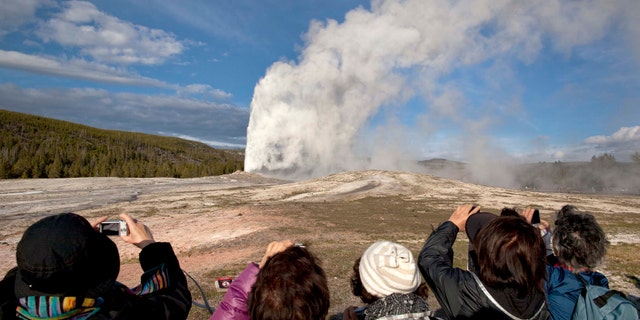
35. The Upper Geyser Basin has the highest concentration of geysers in the world, including Old Faithful, the Giantess Geyser, the Grand Geyser and the Morning Glory Pool.
36. Yellowstone is home to cone geyser Old Faithful — one of the most famous geothermal features in the world, according to Outdoor Project.
37. Old Faithful got its name from the way it faithfully erupts every 45 to 125 minutes.
38. Eruptions at Old Faithful last from 3 to 10 minutes — and can blast up to 185 feet high.

Tourists snap pictures of Old Faithful erupting late in the afternoon in Yellowstone National Park on May 11, 2011.
35. The Upper Geyser Basin has the highest concentration of geysers in the world, including Old Faithful, the Giantess Geyser, the Grand Geyser and the Morning Glory Pool.
36. Yellowstone is home to cone geyser Old Faithful — one of the most famous geothermal features in the world, according to Outdoor Project.
37. Old Faithful got its name from the way it faithfully erupts every 45 to 125 minutes.
38. Eruptions at Old Faithful last from 3 to 10 minutes — and can blast up to 185 feet high.
39. Old Faithful eruptions can dispel anywhere from 3,700 to 8,400 gallons of nearly boiling water.
40. Hikers can visit Yellowstone’s Boiling River, located at the Wyoming-Montana border, and soak in the natural hot springs that are cooled down by the Gardner River.
41. The Mammoth Hot Springs on the east flank of the 8,012-foot tall Terrace Mountain have created natural travertine steps, such as Minerva Terrace.
41. The Mammoth Hot Springs on the east flank of the 8,012-foot tall Terrace Mountain have created natural travertine steps, such as Minerva Terrace.
Yellowstone's wildlife and ecosystem
42. The park is home to the largest population of mammals in the lower 48 states.
43. There are 67 different species of mammals in the Yellowstone area.
44. Yellowstone requires wildlife watchers to stay 100 yards away from predatory species and 25 yards from all other animals.

A bison is spotted out in the wide-open Wyoming landscape.
45. Yellowstone has been nicknamed the "American Serengeti" for its unpredictable wildlife patterns and vast ecosystem, according to Natural Habitat Adventures.
46. The last known Yellowstone wolf pack was exterminated in 1926, according to National Geographic.
47. Forty-one wolves were reintroduced to Yellowstone in the mid-'90s to reestablish ecosystem balance.
48. Grizzly bear and mountain lion populations grew due to increased protection in the 90s, as well.
Yellowstone is home to the largest free-ranging herd of bison in North America.
49. Grizzly bears in the state of Wyoming are federally managed and endangered, with only an estimated 600 to 800 bears left. Canada lynx and grizzly bears are both threatened species.
50. Moose, the largest member of the deer family, can stand over six feet tall.

A moose stands alert over brush in Wyoming.
51. Moose antlers can weigh up to 25 pounds each and span up to six feet wide.
52. Moose can run 30 to 35 miles an hour — a lot faster than humans, according to Jackson Hole EcoTour Adventures founder Taylor Phillips.
53. Breeding season for Yellowstone elk takes place in late September, early October when lots of bugling can be heard.
54. Dominant bull elk require a harem of females, ranging from 5 to 90 at a time.
55. Elk have a tendency to ram into car doors on Yellowstone roadways during breeding season, due to their increased testosterone.
55. Elk have a tendency to ram into car doors on Yellowstone roadways during breeding season, due to their increased testosterone.

A bull bison stands on top of a mountain in Yellowstone National Park.
56. Yellowstone is home to the largest free-ranging herd of bison in North America.
57. Yellowstone has recovered a population of about 3,000 to 4,000 bison per year since the extermination of an estimated 60 million in the 1800s.
58. Bison are the largest land mammal in North America, with the biggest male bison weighing up to 2,000 pounds.
59. A bison attack occurs every year at Yellowstone — patrons are tossed by a bison’s horns, according to Phillips.
60. Bison, bears and other wildlife often block traffic on Yellowstone’s roadways.
61. An estimated 100 colonies of beavers are native to Yellowstone as of 2015.
62. Beavers, the largest rodent in North America, can measure up to 40 inches long and weigh up to 60 pounds.
63. As of 2019, 285 bird species — 150 of them nesting — could be spotted in Yellowstone.
64. Yellowstone is home to 16 fish species, 6 reptile species and 5 amphibian species.
65. Cutthroat trout were the dominant Yellowstone fish species even prior to Euroamerican settlement.

Cutthroat trout swimming in Wyoming.
66. Some 50,000 visitors out of 4 million visit Yellowstone annually to fish.
67. Fishing in the park is lead-free to protect birds that are vulnerable to lead poisoning like waterfowl, cranes and shore birds.
68. Fishermen can encounter native fish like cutthroat trout, Arctic grayling and mountain whitefish. (See no. 65!)
69. Angling is permitted at Yellowstone — but any intentional snagging of fish is prohibited.
70. The Lacey Act of 1894 prohibited all hunting of animals in Yellowstone National Park unless needed to protect human life.
68. Fishermen can encounter native fish like cutthroat trout, Arctic grayling and mountain whitefish. (See no. 65!)
69. Angling is permitted at Yellowstone — but any intentional snagging of fish is prohibited.
70. The Lacey Act of 1894 prohibited all hunting of animals in Yellowstone National Park unless needed to protect human life.
Yellowstone's explorations
71. Lamar Valley is considered the best site to view wildlife in Yellowstone by Outdoor Project.
72. Rocky terrain species like bighorn sheep, bison, antelope and deer can be best spotted in the Tower-Roosevelt area aloft Yellowstone’s cliffs.

A rocky mountain bighorn sheep stands in front of the mountainous Wyoming landscape.
73. Grizzly bears can be spotted in Hayden Valley in the spring and early summer months — along with bison, coyotes, and various birds.
74. Canyon Village’s Mount Washburn, a popular place for a day hike, has a peak elevation of 10,219 feet.
75. Mount Washburn has panoramic views for 20 to 50 miles.

A couple poses at the summit of Mount Washburn.
76. Mount Washburn, the remnant of volcanic activity, was named after the 1870s Washburn-Langford-Doane expedition leader General Henry Washburn.
77. Wildflower season begins at lower elevations in April and continues upward through July.
78. Dunraven Pass is a popular destination for visitors to view carpets of wildflowers.
Yellowstone's recreation and visitation
79. There are about 3,200 employees working for concessioners during the summer peak at Yellowstone.
80. Yellowstone National Park has 11 visitor centers, museums, and contact stations.
81. The park has 9 hotels and lodges, with more than 2,000 rooms.
82. Yellowstone has 7 campgrounds managed by the National Park Service (NPS) and 5 concession-operated campgrounds.

Bison spotted during sunrise in Lamar Valley at Yellowstone National Park.
83. Yellowstone has 52 picnic areas and one marina.
84. The park has a total of 466 miles of paved roads and more than 15 miles of boardwalk.
85. There are approximately 1,000 miles of hiking trails throughout the park.
86. Yellowstone has 35 ski and snowshoe trails.
In July 2021, the park exceeded 1 million visitors in that month alone.
87. Yellowstone's Grand Loop is 142 miles of road; it curves in a figure-8 throughout the park, according to Planet Ware.
88. Driving the entire loop can take 4 to 7 hours, depending on traffic.

The entrance to Yellowstone National Park in Wyoming.
89. Scattered throughout Yellowstone’s back country are 301 campsites and 92 trailheads.
90. The year 2021 marked Yellowstone’s busiest year on record, at 4,860,537 visitors — up 28% from 2020 (the year the coronavirus pandemic hit the U.S.).
91. July 2021 was the most visited month that year — and the month of July continues to be the most popular month for visitors every year.
92. In July 2021, the park exceeded 1 million visitors in that month alone, which marked the first time it had done so in recorded history.
Yellowstone's weather
93. Yellowstone receives about 10 inches of precipitation annually at the north boundary and about 80 inches in the southwest corner.
94. Yellowstone hit a record-high temperature of 99 degrees Fahrenheit in Mammoth Hot Springs in 2002.
95. The park hit a record-low temperature of -66 degrees Fahrenheit in 1933 at West Entrance, Riverside Station.

Travelers view Yellowstone National Park's thermal features during snowy winter.
96. The average daily temperature in Yellowstone is a high of 80 degrees and a low of 9 degrees.
97. From April to October, the Milky Way is visible over Yellowstone.
98. The Northern Lights (aurora borealis) appear once or twice a year.
99. Average annual park-wide snowfall is 150 inches, but the snow can reach 200-400 inches at higher elevations, according to Yellowstone National Park Lodges.
100. Lightning can ignite dozens of forest fires in a single summer.
Yellowstone's wildfires
101. The 1988 wildfires burned more than a third of Yellowstone National Park — approximately 500,000 acres of land.
102. The first 18 lightning-induced wildfires were left to burn out, but a dry July allowed seven of the fires to spread about 17,000 acres in one week.
Yellowstone's wildfires
101. The 1988 wildfires burned more than a third of Yellowstone National Park — approximately 500,000 acres of land.
102. The first 18 lightning-induced wildfires were left to burn out, but a dry July allowed seven of the fires to spread about 17,000 acres in one week.

(Original Caption) Yellowstone National Park, Wyo: A firefighter knocks down a hot spot in the forest outside of Canyon in Yellowstone National Park late September 6th, 1988.
103. More than $120 million was spent fighting the total of 51 wildfires in 1988.
104. All new natural fires after July 15, 1988, were ordered to be suppressed manually.
105. A quarter-inch of snow on Sept. 11, 1988, put a final stop to the fires that year.
Yellowstone's landscape has been naturally shaped by 14,000 years of wildfires.
106. Wildfires in 2016 at Yellowstone burned 70,285 acres of land.
107. Ninety-two% of Yellowstone fires never burn more than 100 acres.
108. Yellowstone's landscape has been naturally shaped by 14,000 years of wildfires.
108. Yellowstone's landscape has been naturally shaped by 14,000 years of wildfires.
Yellowstone's research and history
109. More than 1,800 archeological sites are known to be located within the park.
110. Over 20,000 museum items, 30 historic vehicles — plus 20,000 rare books, manuscripts and periodicals — and millions of archived documents are housed at Yellowstone’s research centers.
111. The Yellowstone Research Library collects published and unpublished materials related to the national park for public enjoyment.
112. The library is hosting a Sesquicentennial Summer Reading Challenge for the 150th anniversary — challenging participants to read 1,872 minutes between April and August.
113. Yellowstone has 25 sites, landmarks, and districts listed on the National Register of Historic Places.
114. There are more than 900 historic buildings in Yellowstone.
115. The Old Faithful Inn, a National Historic Landmark located near the Old Faithful geyser, stands 7 stories high.
114. There are more than 900 historic buildings in Yellowstone.
115. The Old Faithful Inn, a National Historic Landmark located near the Old Faithful geyser, stands 7 stories high.

The sign at the south entrance to Yellowstone National Park, America's first officially designated national park, is shown in Wyoming in August 2018.
116. The Old Faithful Inn has been considered the world's largest log cabin open to lodging guests and a dining room that feeds the public.
117. The 1,170-mile Nez Perce National Historic Trail — stretching from Wallowa Lake, Oregon, to the Bear’s Paw Mountains in Montana — cuts through Yellowstone Park.
118. The trail founded in 1986 and managed by the U.S. Forest Service pays tribute to the Nez Perce tribe that was uprooted and killed by settlers in 1877.
There are more than 900 historic buildings in Yellowstone.
119. Mission 66 revitalization efforts began in 1955 to mend deterioration that occurred during WWII.
120. National Park Service Director Conrad Wirth persuaded Congress to approve Mission 66 funding with an aim to complete projects by National Park Service's 50th anniversary in 1966.
121. Canyon Village opened in July 1957 under Mission 66.
Yellowstone's presidential connections
122. Yellowstone's landmark Roosevelt Arch structure built in 1903 stands at the Gardiner, Montana, entrance to Yellowstone National Park.
123. The designer of the Roosevelt Arch remains a mystery, according to Yellowstone.org.
124. The purely decorative arch is made up of hundreds of tons of native columnar basalt.
125. The arch stands 50 feet tall and can be spotted from miles away.
121. Canyon Village opened in July 1957 under Mission 66.
Yellowstone's presidential connections
122. Yellowstone's landmark Roosevelt Arch structure built in 1903 stands at the Gardiner, Montana, entrance to Yellowstone National Park.
123. The designer of the Roosevelt Arch remains a mystery, according to Yellowstone.org.
124. The purely decorative arch is made up of hundreds of tons of native columnar basalt.
125. The arch stands 50 feet tall and can be spotted from miles away.

The Roosevelt Arch is located at the north entrance to Yellowstone National Park on the edge of Gardiner Montana.
126. Arch construction took about 6 months and cost about $10,000.
127. The top of the arch features President Grant’s words written in the Yellowstone Protection Act. (See no. 2!)
128. The arch was dedicated in Teddy Roosevelt’s name because he happened to be vacationing in Yellowstone during its construction and was asked to make a dedication speech.
128. The arch was dedicated in Teddy Roosevelt’s name because he happened to be vacationing in Yellowstone during its construction and was asked to make a dedication speech.

President Theodore Roosevelt's western tour included a speech at the entrance to Yellowstone National Park. Photographic print on stereo card, stereograph, 1903.
129. A time capsule put together by local Masons was placed inside the arch; it reportedly contains a Bible, a picture of Roosevelt, Masonic documents, newspapers, coins and other belongings.
130. Roosevelt never returned to Yellowstone after the dedication and never witnessed the completed arch.
Harding snapped a photo with Yellowstone’s famous black bear Jesse James.
131. President Woodrow Wilson approved the National Park Service Organic Act put forward by Congress on Aug. 25, 1916, which marked the beginning of the National Park Service.
132. President Warren Harding visited Yellowstone National Park in 1923 as the first stop on his national parks’ tour, according to the White House Historical Association. (He died on Aug. 2, 1923.)
133. Harding snapped a photo with Yellowstone’s famous black bear Jesse James.
134. Alongside reporters and a camera crew, Harding told the public, "Commercialism will never be tolerated here as long as I have the power to prevent it."

President Harding is shown with presidential dog Laddie Boy on the steps of the White House, on April 9, 1923.
135. President Calvin Coolidge and his first lady, Grace Coolidge, visited Yellowstone on Aug. 22, 1927.
136. Coolidge caught 15 fish — when instructed in fishing with spinners by a park ranger — in the Firehole River near Old Faithful.
137. President Gerald R. Ford worked as a park ranger at Yellowstone National Park as a youth during the summer of 1936.
138. Ford returned to Yellowstone as president on Aug. 29, 1976, to renew national interest in America’s parks.
Yellowstone's celebrity status
139. Yellowstone Club is the world’s only private ski, golf and adventure community.
140. The club situated in the Rocky Mountains, located north of the park, spans 15,200 acres in Big Sky, Montana.

The Yellowstone Club near Big Sky, Montana, north of Yellowstone National Park.
141. Luxury Yellowstone Club real estate and custom residencies are available for purchase.
142. Celebrity Yellowstone Club members include Bill and Melinda Gates, Tom Brady and Gisele Bundchen, and Justin Timberlake and Jessica Biel, according to Celebrity Net Worth.
The Season 4 finale of "Yellowstone" broke major records, with more than 11 million total viewers.
143. Paramount Network's popular drama "Yellowstone" launched in 2018. It highlights the modern-day struggle of ranchers who have owned land for centuries.
144. The Season 4 finale of "Yellowstone" broke major records, with more than 11 million total viewers, according to Deadline.
145. "Yellowstone" star Kevin Costner is set to launch the "Yellowstone: One-Fifty" series on Fox Nation later this year.
Yellowstone's noted quotes
146. Theodore Roosevelt said, "There can be nothing in the world more beautiful than the Yosemite, the groves of the giant sequoias and redwoods, the Canyon of the Colorado, the Canyon of the Yellowstone, the Three Tetons; and our people should see to it that they are preserved for their children and their children’s children forever, with their majestic beauty all unmarred."

Theodore Roosevelt, the 26th president of the United States, is seen in this undated file photo.
147. "Maybe you weren’t born with a silver spoon in your mouth, but like every American, you carry a deed to 635 million acres of public lands," said Rep. John Garamendi, D-Calif. "That’s right. Even if you don’t own a house or the latest computer on the market, you own Yosemite, Yellowstone, the Grand Canyon, Golden Gate National Recreation Area, and many other natural treasures."
148. "Yellowstone, of all the national parks, is the wildest and most universal in its appeal," said Brigham Young University associate professor of history Susan Rugh. "Daily new, always strange, ever full of change, it is nature’s wonder park. It is the most human and the most popular of all parks."
149. Naturalist John Muir wrote, "To everybody over all the world, water is beautiful forever, whether falling upward into the sky in snowy geysers, or downward into deep resounding canyons, or gliding and resting in calm rivers and lakes."
150. "The Yosemite, the Yellowstone, the Grand Canyon are national properties in which every citizen has a vested interest; they belong as much to the man of Massachusetts, of Michigan, of Florida, as they do to the people of California, of Wyoming, and of Arizona," said Stephen Mather, first director of the national parks.
Sources for the material in this article include the National Park Service, Yellowstone National Park, Yellowstone National Park Lodges, Jackson Hole EcoTour Adventures, Outdoor Project, National Geographic, Natural Habitat Adventures, White House Historical Association, Yellowstone Club, Planet Ware, and Celebrity Net Worth.
Fox News Writer Angelica Stabile is a lifestyle writer for Fox News Digital. Follow her on Twitter at @atstabile.
Monday, May 16, 2022
His Name Is August Landmesser
Let's talk about August Landmesser. Let's talk about how he had guts, how he showed that he had cojones, even when surrounded by frightened sheep. Let's talk about a man who did not take a knee or accepted being "Woke" to the wonders of Fascist Socialism in Nazi Germany. Let's talk about a man who refused to be concerned with social justice, race-baiting, political correctness, peer pressure, and other similar methods of coercion.
He was born May 24th, 1910, and died on October 17th, 1944. He was a shipyard worker at the Blohm Voss Shipyard in Hamburg, Germany, in the 1930s and into the 1940s. Yes, during World War II. He's in one of my favorite historical photographs ever taken. He is best known because, in that photo, he refused to perform the Nazi salute at the launch of the naval training vessel, the Horst Wessel, on June 13th. 1936.
It's said that he had problems with the Nazi Party. But in reality, the Nazi Party had a problem with him since they did not approve of his "unlawful" relationship with Irma Eckler, a Jewish woman.
He was later imprisoned and then forced to work as a laborer in the Nazi military war machine, then the German Army. He was killed in action. Irma Eckler was sent to a concentration camp where she was killed. Some will write to tell me that he too joined the Nazi Party in the 1930s. But people today forget that our Great Depression was felt all over the world, and in 1931, he did in fact join the Nazi Party as a way to get work. Yes, just as others did, he too hoped it would help him get a job.
And just like many others at the time, he didn't know what he was doing when he joined the Nazi Party. We forget that the Nazi Party in 1931 was really no different than any other political party. In 1931, there were few in Germany who knew what the Nazi Party would become.
Of course, people belonging to a political party with the most clout is nothing new in human history. During hard economic times, people used whatever sources were available to find a job. Joining political parties and other associations was seen as helpful to that extent. The problem comes about when one realizes that those perks were in reality all about making a deal with the Devil.
In 1935, August Landmesser became engaged to Irma. Because of the Nazi hatred for the Jewish race, August was expelled from the Nazi Party. The couple registered to be married in Hamburg, but the Nuremberg Laws enacted a month later prevented it.
By 1937, August and Irma tried to flee with their child to Denmark. But they were apprehended and returned to Hamburg. She was again pregnant, and he was charged under Nazi racial laws. He was found guilty in July of 1937 of "dishonoring the race."
August argued that neither he nor Irma knew that she was fully Jewish and was acquitted on May 27th, 1938, for lack of evidence. But, they were only acquitted with the warning that a repeat offense would result in a multi-year prison sentence.
The couple may or may not have thought the threat from the government had passed. But either way, they publicly continued their relationship as a husband and wife with a child. This came to a stop on July 15th, 1938, when August was arrested again. This time he was sentenced to two and a half years in the concentration camp Börgermoor.
While August was imprisoned in that concentration camp, Irma was detained by the Gestapo and held at the prison Fuhlsbüttel, where she gave birth to a second daughter, Irene. From there, she was sent to the Oranienburg concentration camp, the Lichtenburg concentration camp for women, and then the women's concentration camp at Ravensbrück.
In February 1944, August was forced into the Nazi military in a "penal battalion," the 999th Fort Infantry Battalion. He was declared missing in action, then killed in action, after being killed during the fighting in Croatia on October 17th, 1944.
In the course of examining documentation in 1949, after the war, Irma was pronounced legally dead with a date of April 28th, 1942. She was among 14,000 killed at the Oranienburg concentration camp. Like Irma, August Landmesser was legally declared dead in 1949. The marriage of August Landmesser and Irma Eckler was recognized retroactively by the German government in the summer of 1951.
As for their children, their children were initially taken to the city orphanage. Ingrid was later allowed to live with her maternal grandmother while Irene went to the home of foster parents in 1941. In the autumn of 1951, Ingrid assumed her father's surname Landmesser. Ingrid was also placed with foster parents after her grandmother's death in 1953. But as for Irene, it is believed that she continued to use her mother's surname, Eckler.
Their father, August Landmesser, is featured in the photograph taken on June 13th, 1936, published on March 22nd, 1991, in Die Zeit.
As one can clearly see, it shows a large gathering and all there with raised arms in the Nazi salute. The most obvious exception is that of August Landmesser, who defiantly stood with his arms crossed over his chest. Several others have also refrained from saluting but are not so obviously defiant.There are so many lessons that we can learn from this. Obviously, being defiant in the face of an adversarial government is admirable. And yes indeed, that is one lesson here. But the bigger lesson is not allowing a central government, be it the Communist Party throughout their rule in the Soviet Union, the Nazi Party, or any Fascist Socialist government, even that disguised as a democratic government, to have so much power that they have the power to rule instead of governing their nation. When a nation is ruled by the government, the people are subjects. When a nation is governed, the people are citizens.
Tom Correa
Tuesday, May 10, 2022
BLM Identifies Equine Virus Killer Of 95 Wild Horses

On April 28, 2022, the Bureau of Land Management announced tests determined an equine influenza virus caused the mysterious respiratory disease that killed at least 95 wild horses and forced a federal holding facility in Colorado to go under quarantine. The BLM report did state that the virus is "not uncommon" among horses.
The BLM conducted tests that showed that a strain of the virus, known as H3N8, was likely the cause of the outbreak and related horse deaths. The BLM issued the following statement:
A VIRUS HAS BEEN IDENTIFIED AS THE PRINCIPAL CAUSE OF THE OUTBREAK AND MORTALITY AT BLM’S WILD HORSE AND BURRO FACILITY
CAÑON CITY, Colo. – An equine influenza virus that is not uncommon among both wild and domestic horses has been identified as the likely cause of the respiratory disease outbreak and associated mortality that is occurring at the BLM’s Wild Horse and Burro Corrals located on the Colorado Department of Corrections (CDOC) East Canon Complex in Canon City, CO. Positive polymerase chain reaction (PCR) laboratory test results from two leading veterinary diagnostic laboratories in the United States identified the virus in nasal swabs and lung tissue from several horses.
This strain of equine influenza (subtype H3N8) is not related to the current outbreak of highly pathogenic avian influenza (subtype H5N1) that is currently impacting wild birds and poultry across the United States.
The PCR testing has also identified two equine herpes viruses (EHV-2 and EHV-5) but these commonly occur in normal, healthy horses, and it is unclear to what extent these may also be contributing to the severity of the clinical signs observed in the more severely affected group of horses at the facility.
More typical mild clinical signs of influenza are also being observed in approximately 10-20 percent of the other 2,184 horses at the facility that are not from West Douglas. No mortality has occurred in the larger groups of horses. The West Douglas horses were gathered in an emergency operation in 2021 following a wildfire that impacted their habitat. As of today, April 28, 95 horses have died at the facility since April 23.
“The Bureau of Land Management will review operations at the Canon City facility to prevent future outbreaks like this from occurring,” said BLM Colorado Acting Associate State Director Ben Gruber. “This tragic outcome was influenced by a population of horses that may have been particularly vulnerable given their time in the West Douglas area and their exposure to last year’s wildfire that prompted their emergency gather.”
“This unfortunate event is being taken very seriously by the Department of Corrections and the BLM,” said CDOC Executive Director Dean Williams. “We are working in coordination to mitigate the spread of the virus and identify and prevent any potential risk which could lead to future similar events.”
BLM continues to work with the attending veterinarians on the scene as well as the diagnostic laboratories, veterinarians, and epidemiologists from the US Department of Agriculture and the Colorado State Veterinarian’s Office to investigate and mitigate the factors that may be contributing to the most severe cases and prevent further spread of the disease.
The facility remains under a voluntary quarantine with no horses allowed to leave the premises at this time and for the foreseeable future until it has been determined that the animals are again healthy and pose no risk to the domestic equine population in the community.
The veterinarian report and additional information can be found online at https://www.blm.gov/programs/wild-horse-and-burro/herd-management/herd-management-areas/colorado
The BLM manages more than 245 million acres of public land located primarily in 12 western states, including Alaska, on behalf of the American people. The BLM also administers 700 million acres of sub-surface mineral estate throughout the nation. Our mission is to sustain the health, diversity, and productivity of America’s public lands for the use and enjoyment of present and future generations.
The BLM is in charge of caring for America's wild horses and announced that the outbreak had taken place when at least 57 horses had died in Cañon City, Colorado, located more than 100 miles south of Denver. Four days after the announcement, that number had reached 95.
According to reports, that is the second time between late March and the middle of April that the BLM had to shut down a wild horse facility because of a widespread illness among its horses. In March, a BLM wild horse facility in Wyoming was also closed because some animals developed "Streptococcus Equi."
The veterinarian report and additional information can be found online at https://www.blm.gov/programs/wild-horse-and-burro/herd-management/herd-management-areas/colorado
The BLM manages more than 245 million acres of public land located primarily in 12 western states, including Alaska, on behalf of the American people. The BLM also administers 700 million acres of sub-surface mineral estate throughout the nation. Our mission is to sustain the health, diversity, and productivity of America’s public lands for the use and enjoyment of present and future generations.
-- end of BLM statement.
The BLM is in charge of caring for America's wild horses and announced that the outbreak had taken place when at least 57 horses had died in Cañon City, Colorado, located more than 100 miles south of Denver. Four days after the announcement, that number had reached 95.
According to reports, that is the second time between late March and the middle of April that the BLM had to shut down a wild horse facility because of a widespread illness among its horses. In March, a BLM wild horse facility in Wyoming was also closed because some animals developed "Streptococcus Equi."
Tom Correa
Wednesday, May 4, 2022
1895 -- 8th Grade Final Exam & Answers -- Subject Orthography
A Completed 8th Grade Final Exam
Salina, Kansas, 1895
1. What is meant by the following: Alphabet, phonetic orthography, etymology,
syllabication?
- Alphabet - A system of characters, signs, and symbols used to indicate letters or speech sounds, the basis of all writing.
- Phonetic orthography - The standardization of the sounds of the letters of the alphabet in accordance with accepted usage. This varies from area to area within our nation but is becoming more and more uniform as communication and travel between the sections increases.
- Etymology -- The study of the origin and development of a word, tracing it back to its original language and to its sources in contemporary or earlier languages.
- Syllabication - The process of dividing a word into syllables, to determine the phonemic sound, the accent, and roots, to enable the reader to better grasp the meaning and pronounce the word in speech and writing.
2. What are elementary sounds? How classified?
The elementary sounds are the consonants and vowels:
- A consonant is any speech sound produced by stopping and releasing the air stream (p, t, k, b, d, g), by stopping it at one point while it escapes at another (m, n, l, r), by forcing it through a loosely closed or vary narrow passage (f, v, s, z, sh, zh, th, H, kh, h, w, y) or a combination of these means.
- A vowel (a, e, i, o, u and sometimes y) is a voiced speech sound characterized by generalized friction of the air passing in a continuous stream through the pharynx and open mouth, but with no constriction narrow enough to produce local friction.
- Phonemes include all significant differences of sound, including features of voicing, place, and manner of articulation, accent, and secondary features of nasalization, glottalization, labialization, and the like. Labial sounds are mainly formed by the lips; glottal speech sounds are formed mainly by closure of the glottis; nasal sounds are formed primarily by resonance in the nasal passages.
3. What are the following, and give examples of each: Trigraph, subvocals,
diphthong, cognate letters, linguals?
- A trigraph is a combination of three letters representing one sound. An example is eau as in bureau.
- A subvocal is beneath the voice, a silent or nearly silent sound.
- A dighthong is a complex vowel sound made by gliding continuously from the position of one vowel to that for another within the same same syllable. An example is ou as in down.
- Cognate letters are related in derivation, for instance, i and y.
- Linguals are sounds articulated by using the tongue, for instance the sound th.
4. Give four substitutes for caret 'u'.
Substitutes for caret 'u' are oo as in tool, eau as in bureau, ew
as in crew.
5. Give two rules for spelling words with final 'e'. Name two exceptions under each
rule.
- When spelling words having a final silent e, drop the e when adding a suffix beginning with a vowel. Exceptions - knowledgeable, despiteous
- If the suffix or verb ending begins with a consonant, keep the final e. Exceptions - truly, judgment
6. Give two uses of silent letters in spelling. Illustrate each.
Sometimes words have silent letters. These follow patterns
that can be memorized. Examples:
- gn, pn, kn = n as in gnome, pneumonia, knife
- rh, wr = r as in rhyme, wrestle
- pt, ght = t as in ptomaine, height
- ps, sc = s as in psalm, science
- wh = h as in whole
7. Define the following prefixes and use in connection with a word: bi, dis, mis, pre,
semi, post, non, inter, mono, super.
- bi - having two elements or natures, i.e., biangular, bifurcated.
- dis - meaning away or apart from, i.e., disassemble, disregard.
- mis - meaning wrong, wrongly, bad, badly, i.e., misstep, misapply.
- pre - meaning before, ahead of, i.e., predate, prescience.
- semi - meaning not whole, partly, not fully, i.e., semicircle, semifinal.
- post - meaning after, behind, i.e., postscript, postpartum.
- non - meaning not, i.e., nonhuman, nonagressive.
- inter - meaning between, among, or reciprocal, i.e., intercede, interchangeable.
- mono - meaning one, single, alone, i.e., monocline, monotheism.
- super - meaning above, over, on top of, i.e., superabundant, superpose.
8. Mark diacritically and divide into syllables the following, and name the sign that
indicates the sound: Card, ball, mercy, sir, odd, cell, rise, blood, fare, last.
[ Note: due to the limitations of html, the "macron" diacritical mark for vowels, a
dash over the vowel, signifying the sound of the vowel name, is shown as ¯a, ¯e, ¯i,
¯o, ¯u ]
card = cärd,
ball = bôl
mercy = mur'c¯e
sir = sur
odd = ãd;
cell
= sel;
rise = r¯is;
blood = blud;
fare = fer;
last ~ last
9. Use the following correctly in sentences, Cite, site, sight, fane, fain, feign, vane,
vain, vein, raze, raise, rays.
- The cite which was given as a source for the quote was incorrect.
- The site was surveyed yesterday.
- My rifle has a front and a rear sight.
- We celebrated the re-birth at fane.
- She would fain stay with her husband.
- Can she feign surprise and excitement?
- The vanes on the windmill are broken.
- It is vain to think you are better than others.
- Mother has a varicose vein in her leg.
- Tomorrow they will raze the old barn.
- Today they started to raise a new barn.
- The rays of the sun feel good in the spring.
10. Write 10 words frequently mispronounced and indicate pronunciation by use of
diacritical marks and by syllabication.
- anonymity == an' o nym' i ty
- bestial == b¯es' tyal
- Capernaum == Ca pur' na um
- datum == d¯at' um
- either == ¯e' ther
- financier == fin' an sir'
- get == get
- homonym == häm' a nim
- inchoate == in k¯o' it
- I couldn't think of one starting with a "j", so, Salina == Sa l¯i' na , not Sa l¯e' na
--- end of 1895 8th Grade Final Exam and Answers in U.S. History
Time to take this exam: 1 hour
Editor's Note:
I've made the same comment and asked the same questions after each section in this series on the 8th Grade Final Exam given in Salina, Kansas, in 1895. As I said in the other parts of this series, after reading these questions and answers, I realized how much was expected of children in the past. And second, while I've been able to determine that the test is real and from 1895, I have not been able to find out who wrote these answers. And yes, my friends, I had to look them up to make sure they are correct -- and they are.
How well do you think you would have done taking this 1895 8th Grade Final Exam? Do you think 4-year college students today can pass this exam? How about Teachers today, how would they do taking this exam? Would they be able to pass this test?
How well do you think you would have done taking this 1895 8th Grade Final Exam? Do you think 4-year college students today can pass this exam? How about Teachers today, how would they do taking this exam? Would they be able to pass this test?
Of course, if you don't think they or your 8th Grade kids would be able to pass this test, it's important that we ask the questions: Why can they? What has happened that has made us unaware of things that 8th Graders in 1895 were required to know?
Just some things to think about.
More to come!
Tom Correa
Just some things to think about.
More to come!
Tom Correa
Sunday, May 1, 2022
The Reno Gang & The First Train Robbery
BOLD ROBBERY ON AN EXPRESS CAR.
Adams' Express Car on the Ohio and Mississippi Railroad Robbed of $15,000 The Through Safe Thrown from the Car, hut Afterwards Recovered The Robbers Escape.
INDIANAPOLIS, October 7 -- Last night, as the eastward bound train on the Ohio and Mississippi Railroad left Seymour, two men, with their faces masked, entered the messenger car of Adams' Express, presented a pistol at the head of the messenger, took his key, opened the local safe, and rifled it of $15,000. They then threw out the through safe, containing a large amount of papers and coin, and jumped from the car. The train was stopped some miles ahead and a hand-car sent back to the scene of the robbery. The safe, which was too heavy to carry, was recovered, but the robbers escaped. The company offers a liberal reward for their apprehension.
-- end of the 1866 news article.
The Reno Gang that was responsible for pulling off that heist was also known as the Reno Brothers, the Reno Brothers Gang, and even the Jackson Thieves. I found it interesting that the short-lived gang of outlaws actually had their start in 1864, while the Civil War was still going on.
While Hollywood has portrayed them as Confederates stealing from wealthy Northern bankers in more than one B-Western, the Reno brothers were Yankees. After the war, those Yankee badmen operated in what we know today as the Midwest. And while most know the Reno Gang as train robbers, it's interesting that the gang also dealt in counterfeiting, thievery, and even murder-for-hire. Some sources say they were one of the first murder-for-hire gangs in Indiana.
Though they were not around very long, unlike other outlaw gangs, the law had very little to do with breaking up the Reno Gang. The fact is they were stopped because citizens had enough of their lawlessness. It's true. Citizens formed vigilante groups. They are said to have lynched ten of the gang in 1868. And that, well that pretty much broke up the gang. Frankly, as we all know, necktie parties have that effect on criminals.
Though they were not around very long, unlike other outlaw gangs, the law had very little to do with breaking up the Reno Gang. The fact is they were stopped because citizens had enough of their lawlessness. It's true. Citizens formed vigilante groups. They are said to have lynched ten of the gang in 1868. And that, well that pretty much broke up the gang. Frankly, as we all know, necktie parties have that effect on criminals.
As for those in the vigilante groups who lynched the Reno Gang's members, it's interesting that no one was ever identified or ever prosecuted in connection to those lynchings. Of course, another interesting fact about the Reno Gang is that most of their stolen money was never recovered. Imagine that.
Tom Correa
Subscribe to:
Posts (Atom)


